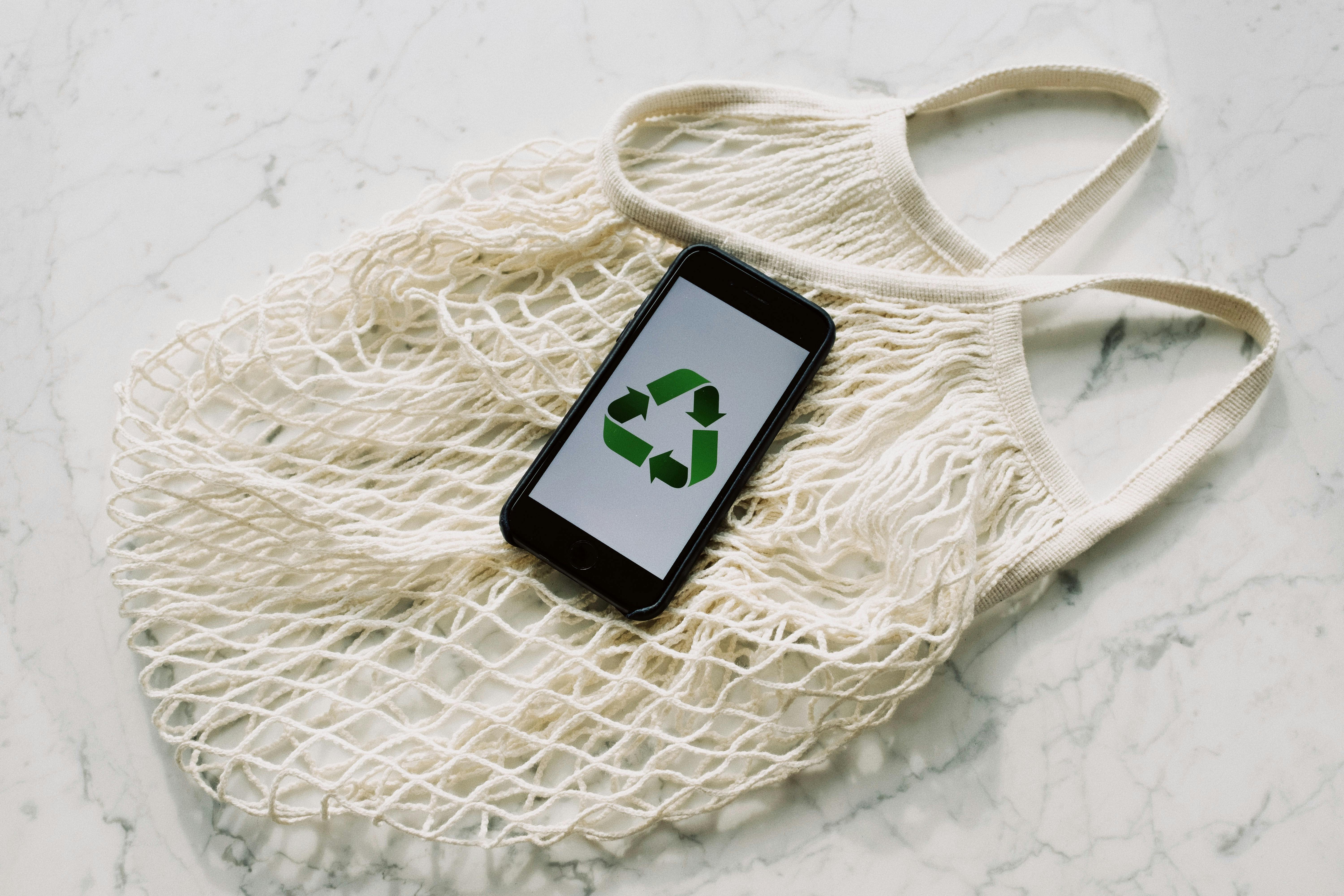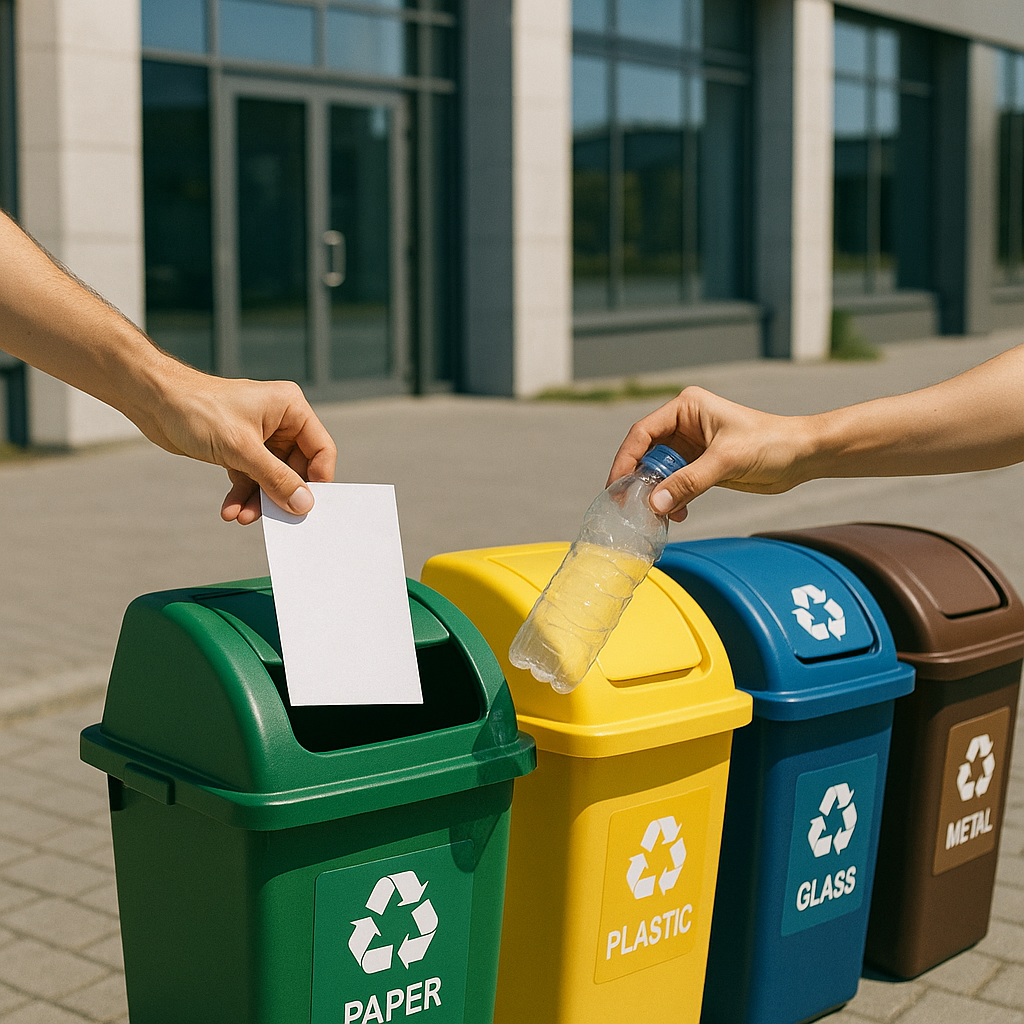5901 Botham Jean Blvd, Dallas, TX 75215
Commercial Waste Management Plan: Everything You Need to Know
July 19, 2025Every business generates waste. From retail stores to manufacturing facilities, waste is an inevitable byproduct of commercial operations. A commercial waste management plan is a strategic document outlining how a business will handle the collection, storage, transportation, and disposal of all waste materials generated during its operations.
These plans cover all solid waste streams in a business environment, including everyday items like paper and cardboard, food waste from cafeterias, packaging materials from shipping departments, and specialized waste like electronic components. For many organizations, a well-structured waste management plan is essential for both operational efficiency and environmental responsibility.
Effective commercial waste management plans serve multiple purposes. They help businesses achieve sustainability goals by reducing landfill contributions and ensuring compliance with increasingly strict local, state, and federal regulations. Perhaps most compelling for many businesses, these plans can significantly reduce waste disposal costs through systematic reduction, reuse, and recycling initiatives.
What Are the Key Components of a Commercial Waste Management Plan?

A comprehensive commercial waste management plan serves as the backbone of any organization’s sustainability efforts. By developing a structured approach to waste handling, businesses can reduce their environmental impact, comply with regulations, and potentially lower disposal costs. Here are essential components to include in your commercial waste management plan:
Waste Stream Analysis
Understanding the types and amounts of waste your organization generates is critical before implementing any strategies. A thorough waste stream analysis helps identify waste types and quantities across your facility, serving as baseline data for measuring future improvements.
Track and record waste generation over a month-long period, examining discarded materials and their quantities. This information targets specific waste streams for reduction or alternative handling methods.
Category breakdowns in your waste stream analysis should include:
- Paper and cardboard
- Plastics (by type)
- Glass
- Metal
- Food waste
- Electronic waste
- Hazardous materials
- Construction debris
Clear Objectives and Measurable Goals
Effective plans include specific, measurable goals aligned with broader sustainability objectives, providing direction and a basis for measuring success.
Set both short-term and long-term goals such as:
- Reducing overall waste by a specific percentage
- Increasing recycling rates to a target level
- Diverting a certain percentage of waste from landfills
- Implementing zero waste policies in specific departments
- Reducing disposal costs by a target amount
Waste Reduction Strategies
The most effective way to manage waste is to generate less in the first place. Your plan should prioritize waste prevention strategies based on the waste hierarchy: reduce, reuse, recycle.
Consider implementing these waste reduction approaches:
- Transitioning to paperless operations where possible
- Purchasing supplies with minimal packaging
- Selecting products with longer lifespans
- Repairing equipment instead of replacing it
- Donating usable items rather than discarding them
- Implementing sustainable procurement policies
Recycling and Composting Programs
For waste that cannot be prevented, recycling and composting provide effective alternatives to landfill disposal. Your plan should detail how these programs will be structured and managed.
Key elements include:
- Placement and types of collection bins throughout your facility
- Clear signage with visual guides showing what goes where
- Partnerships with local recycling facilities
- Procedures for handling special recyclables like electronics or batteries
- Composting systems for food waste and organic materials
- Regular monitoring of contamination rates
Waste Segregation Procedures
Proper waste segregation maximizes recycling rates and minimizes contamination. Your plan should outline specific procedures for separating different waste streams at the point of generation.
Detailed guidelines for waste segregation should include:
- Color-coded bin systems consistently applied throughout your facility
- Strategically placed waste stations
- Protocols for handling mixed waste
- Special procedures for hazardous materials
- Methods for preventing cross-contamination between waste streams
Designated Responsibilities
A successful waste management plan clearly defines who is responsible for implementing and maintaining various program aspects. Assign specific roles to ensure accountability.
Consider establishing a “green team” or waste management committee with representatives from different departments. Their responsibilities might include:
- Overseeing program implementation
- Conducting regular waste audits
- Monitoring progress toward goals
- Providing recommendations for improvements
- Serving as waste management ambassadors within their departments
Employee Education and Engagement
Even the best-designed waste management plan will fail without employee participation. Your plan should include strategies for educating staff and encouraging their active involvement.
Effective employee education approaches include:
- Initial training sessions for all employees
- Regular refresher courses on proper waste handling
- Clear communication about program goals and progress
- Recognition programs for departments or individuals who excel
- Incentives for participation in waste reduction initiatives
- Fun, engaging activities like zero-waste challenges or competitions
Assessment and Reporting Processes
Regular evaluation is essential for maintaining an effective waste management program. Your plan should include processes for monitoring performance and reporting results.
Key assessment elements include:
- Scheduled waste audits to track progress
- Systems for collecting and analyzing waste data
- Regular reporting to management and employees
- Methods for identifying areas needing improvement
- Procedures for updating the plan based on assessment findings
Waste Disposal Methods and Partners
Your plan should specify appropriate disposal methods for different waste streams and identify trusted waste management partners who align with your sustainability goals and can help track waste diversion metrics.
Document details such as:
- Waste hauling schedules and procedures
- Transportation methods for different waste types
- Criteria for selecting waste management vendors
- Requirements for handling documentation and compliance reporting
- Contingency plans for service disruptions
Budget and Resource Allocation
A realistic budget is crucial for sustaining your waste management program. Your plan should outline the financial and human resources needed for implementation and ongoing operations.
Consider costs associated with:
- Waste collection equipment and infrastructure
- Educational materials and training
- Waste hauling and disposal services
- Staff time for program management
- Monitoring and reporting systems
| Component | Description |
| Waste Stream Analysis | Identify types and volumes of waste generated. |
| Objectives and Goals | Set measurable targets for waste reduction and recycling. |
| Waste Reduction Strategies | Prioritize waste prevention and implement strategies like paperless operations. |
| Recycling and Composting Programs | Structure and manage recycling and composting efforts with clear signage and partnerships. |
| Waste Segregation Procedures | Outline protocols for separating and handling various waste types. |
| Designated Responsibilities | Assign roles to ensure accountability in the waste management process. |
| Employee Education and Engagement | Educate employees and encourage participation in waste reduction initiatives. |
| Assessment and Reporting Processes | Regularly evaluate and report on waste management performance. |
| Waste Disposal Methods and Partners | Select appropriate disposal methods and service providers aligned with sustainability goals. |
| Budget and Resource Allocation | Allocate financial and human resources necessary for implementing waste management strategies. |
By incorporating these key components into your commercial waste management plan, you’ll create a comprehensive framework for reducing waste, increasing recycling rates, and moving toward more sustainable operations. Remember that waste management is an ongoing process that requires regular review and adjustment as your organization’s needs evolve and new opportunities for improvement emerge.
What Tools and Resources Are Available for Waste Management Planning?

Creating an effective waste management plan requires the right tools and resources. Many organizations struggle to accurately measure and track their waste streams, making it difficult to identify opportunities for reduction and recycling. Fortunately, several resources can help businesses, municipalities, and property managers develop and implement successful waste management strategies.
Tracking and Assessment Tools
The EPA’s ENERGY STAR Portfolio Manager is one of the most comprehensive tools for waste management planning. This free online platform allows organizations to track waste, energy, and water data in one secure location. Users can benchmark performance across a portfolio of buildings and generate standardized metrics to assess waste management activities.
The platform provides a consistent framework for measuring progress and sharing information with stakeholders. This data-driven approach helps organizations identify trends, set realistic goals, and demonstrate improvement over time. Portfolio Manager has become the industry standard for sustainability tracking across various sectors.
Waste assessment tools complement tracking systems by helping organizations understand what’s in their waste stream. These tools typically involve systematic reviews of operations to determine the quantity and composition of materials being discarded. Insights gained from waste assessments can inform targeted reduction strategies and highlight opportunities for improved recycling or composting.
Local Government and Hauler Resources
Many local governments and waste hauling companies offer free waste audits to businesses and multi-family properties. These professional assessments provide valuable insights into waste composition and can help identify immediate opportunities for waste reduction and cost savings. Local recycling offices often have staff dedicated to helping businesses optimize their waste management practices.
Waste haulers frequently provide educational materials, bin labels, and signage to support proper waste sorting. Some offer specialized collection services for hard-to-recycle materials or organics. Building relationships with local waste management authorities and service providers can unlock these valuable resources.
Educational and Promotional Materials
Online toolkits have emerged as comprehensive resources for waste management planning. Organizations like the EPA, WM (formerly Waste Management), and various state environmental agencies offer free downloadable guides, templates, and best practices documents. These toolkits typically include step-by-step implementation guides, employee training materials, and communication templates.
Sign-making resources help organizations create clear, consistent messaging about proper waste sorting. For example, the San Francisco Environment sign-maker tool allows users to customize recycling, composting, and landfill signs with images of accepted items. Visual communication significantly improves compliance with recycling and composting programs.
Educational materials for employees, tenants, or residents play a crucial role in program success. Many organizations offer recycling curricula for schools, fact sheets about common contaminants, and multilingual resources to ensure all participants understand waste sorting requirements. Earth911’s sponsored recycling locator helps individuals find recycling options for specific materials in their area.
Specialized Planning Tools
For organizations dealing with complex waste streams, the EPA offers the All Hazards Waste Management Planning Tool. This resource helps organizations prepare for proper waste management during emergencies. Similarly, construction and demolition projects benefit from specialized planning resources that address the unique challenges of managing building materials.
Industry-specific guides address the particular waste management needs of sectors like healthcare, manufacturing, or hospitality. These resources provide targeted strategies that acknowledge the unique waste streams and regulatory requirements facing different industries.
By leveraging these tools and resources, organizations can develop more effective waste management plans, improve recycling rates, and reduce costs associated with waste disposal. The key is selecting resources that align with your organization’s specific needs and waste management goals.
Conclusion: Taking Action on Commercial Waste Management

Implementing a comprehensive commercial waste management plan is essential for businesses committed to environmental stewardship and operational efficiency. Through strategic waste stream analysis, organizations can pinpoint opportunities for reduction at the source, which is the most effective approach to waste management. Setting measurable goals provides direction and accountability, while employee engagement lays the cultural foundation necessary for lasting change.
The most successful waste management programs integrate practical waste prevention strategies with robust recycling systems and ongoing monitoring. These combined approaches reduce environmental impact and deliver cost savings through lower disposal fees, improved resource utilization, and potential revenue from recyclable materials. The financial benefits enhance the environmental advantages, creating a strong business case for waste reduction initiatives.
Ready to transform your organization’s approach to waste management? Contact Okon Recycling at 214-717-4083 for tailored solutions that align with your sustainability goals and operational needs. Our team of experts can help you implement effective waste reduction strategies that benefit both your bottom line and the planet.
